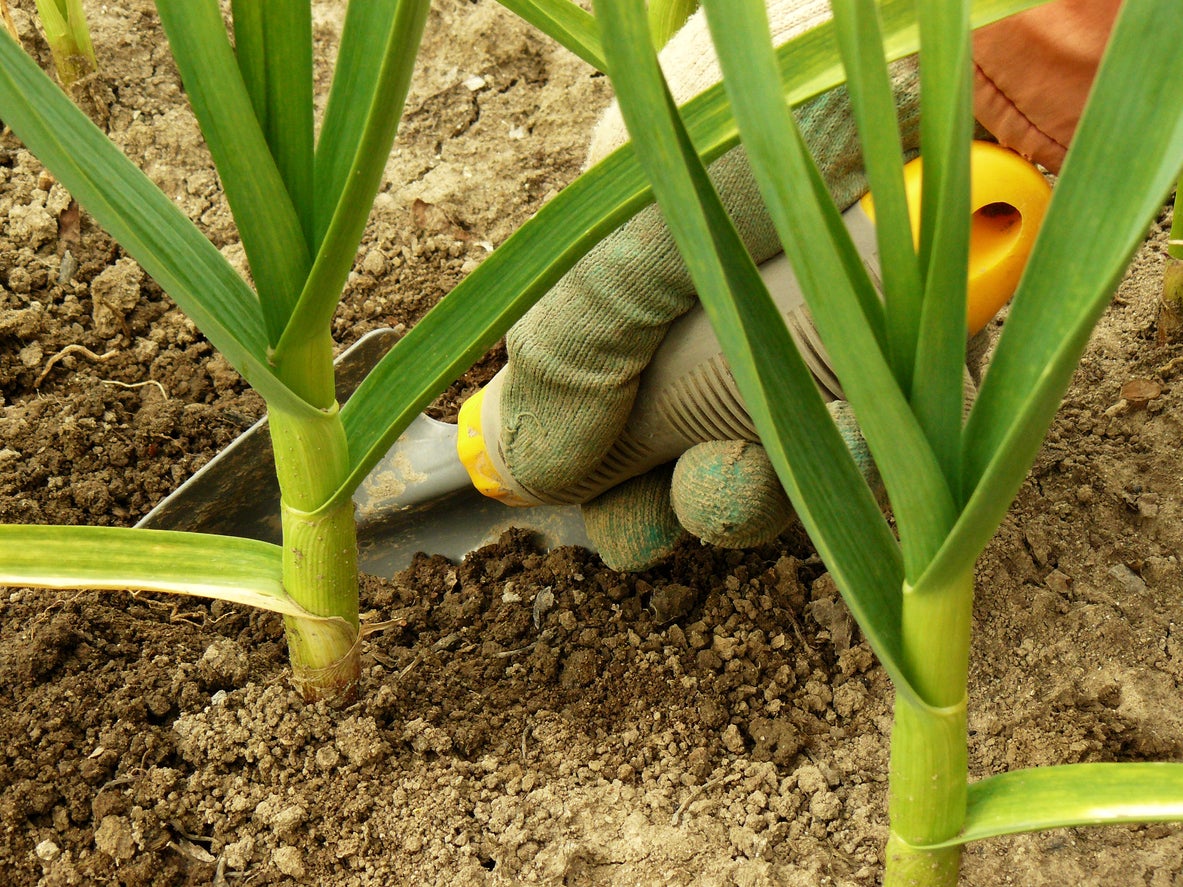What Is Chamiskuri Garlic – Learn About Chamiskuri Garlic Plant Care


Depending upon where you live, softneck garlic may be the optimal variety for you to grow. Chamiskuri garlic plants are an excellent example of this warm climate bulb. What is Chamiskuri garlic? It is an early summer producer which has a long storage life. Gardeners in areas with mild winters should try growing Chamiskuri garlic so they can enjoy the mild flavor and delicious aroma of this variety.
What is a Chamiskuri Garlic?
Garlic lovers have many different varieties from which to choose. A quick glance at Chamiskuri garlic info indicates it was collected in 1983 and is classed as an “artichoke” variety. It produces shoots earlier than many other softneck cultivars and has a nice mild flavor. This is an easy variety to grow provided you have the right soil, site, and planting time.
Artichoke varieties of garlic often develop purplish streaks on the bulb skins. Chamiskuri has creamy white papers on the cloves, which are small and bunched closely. This variety does not produce a scape and, therefore, no hard stem at the center of the bulb. It produces in mid-season and can be easily braided for curing and storage.
The garlic can store for many months in a cool, dry location once cured. The flavor is pungent but not sharp, with a milder garlic flavor than hardneck varieties. Since it stores for a long time, many gardeners also grow the shorter lived hardneck varieties, so they have garlic year-round.
Growing Chamiskuri Garlic
All garlic plants need well-draining soil. Plant from bulbs for earlier yields or use seed (which can take several years until harvest). Plant seed in early fall and bulbs in spring.
Plants prefer full sun but can tolerate light shade. Incorporate well-rotted compost to the garden bed. In areas prone to late freezes or boggy soil, install bulbs in raised beds to prevent rotting.
Mulch around the plants to keep weeds at bay and conserve moisture. Keep soil moderately moist but never soggy. Chamiskuri garlic plants will get 12 to 18 inches (31-46 cm.) tall and should be spaced 6 to 9 inches (15-23 cm.) apart.
Gardening tips, videos, info and more delivered right to your inbox!
Sign up for the Gardening Know How newsletter today and receive a free copy of our e-book "How to Grow Delicious Tomatoes".
Caring for Chamiskuri Garlic
Like most garlic varieties, Chamiskuri needs little special care. It is resistant to deer and rabbits and few insect pests bother it. Occasionally cutworms will eat small sprouts.
Side dress new plants with bone meal or chicken manure. Feed plants again as bulbs begin to swell, usually May to June.
Keep weeds out of the bed, as garlic does not do well with competing vegetation.
Check bulbs in late June by digging around the plant. If they are the size you require, gently dig them out. Brush off the soil and either braid several together or hang them individually to dry. Remove tops and roots and store in a cool, dry location.

Bonnie Grant is a professional landscaper with a Certification in Urban Gardening. She has been gardening and writing for 15 years. A former professional chef, she has a passion for edible landscaping.
-
 Never Plant Seedlings Until They Pass These 3 Simple Tests
Never Plant Seedlings Until They Pass These 3 Simple TestsDon't be over-eager to transplant seedlings into the garden before they are ready. These quick and easy checks will help ensure flourishing plants.
By Mary Ellen Ellis
-
 Grow ‘Karl Rosenfield’ Peony Plants For The Ultimate Frilly Border Beauties And Cut Flowers
Grow ‘Karl Rosenfield’ Peony Plants For The Ultimate Frilly Border Beauties And Cut FlowersFor frilly double magenta peony petals infused with a heady fragrance, grow ‘Karl Rosenfield’ peony plants. Here’s how to cultivate the ultimate plushy blooms
By Tonya Barnett